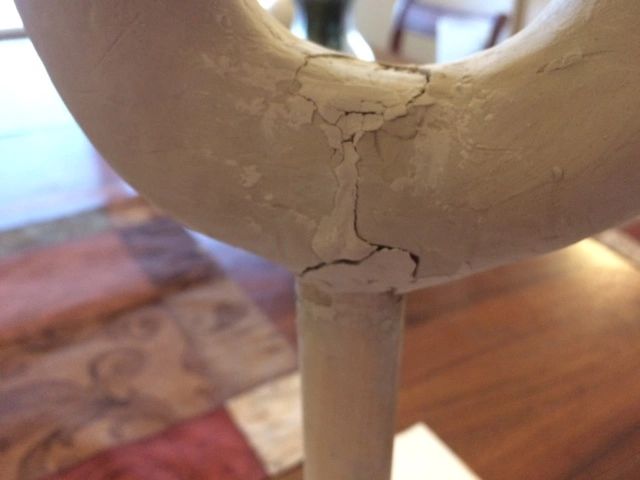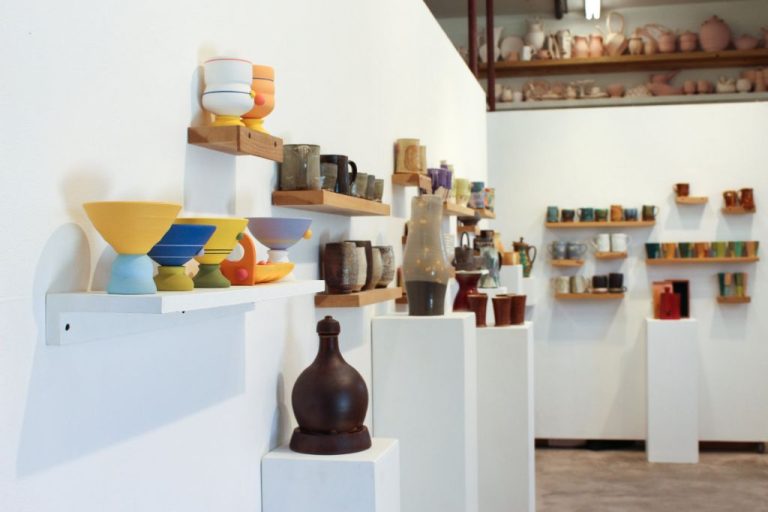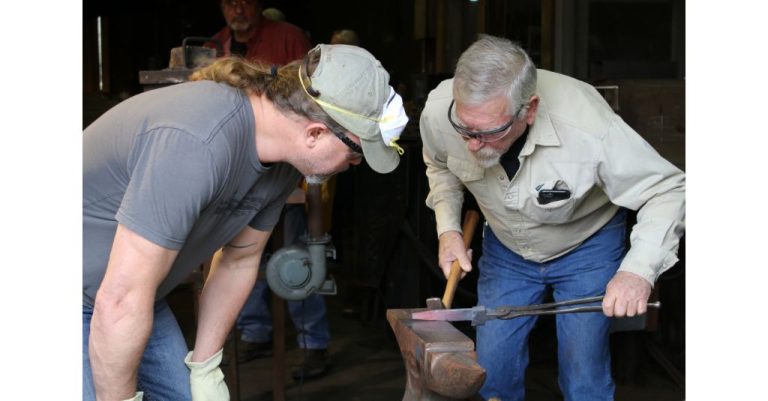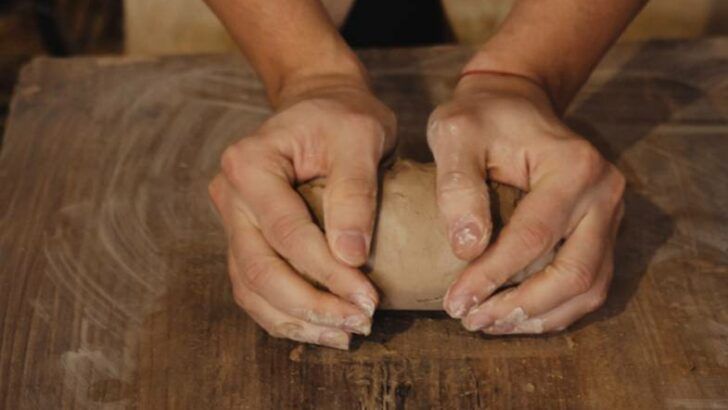Is There An Air Dry Clay That Doesn’T Crack?
Air dry clay, also known as self-hardening clay, is a modeling material that cures naturally through evaporation without the need for baking. It is made from a mixture of clays, binders and fillers that harden as the water evaporates. Air dry clay is a popular choice for artists, hobbyists, kids and crafters because it is easy to work with and does not require firing in a kiln like traditional clay.
Air dry clay can be shaped into sculptures, figurines, jewelry, ornaments, dolls, pottery items and more. It is versatile and can be molded, carved, stamped, shaped and textured. Many air dry clays can also be painted once dry. Air dry clay creates durable finished pieces and is an accessible modeling material for beginners and children. It provides an alternative to oven-baked polymer clay without the need for special equipment.
Why Air Dry Clay Cracks
Air dry clay is made from materials like clay, glue, and hardeners that allow it to dry and harden at room temperature.[1] As it dries, the water evaporates causing the clay to shrink and contract. This shrinkage leads to stress which can result in cracks forming.[2]
Cracking occurs because air dry clay contains water that allows it to be molded and shaped. As the water evaporates during the drying process, the clay particles move closer together causing the clay to shrink. This shrinkage creates stress in the structural integrity of the clay, and if the stress becomes too great, it can cause cracks.
Areas of the clay sculpture that are thicker or unevenly distributed tend to be more prone to cracking. As the thicker parts dry slower, the thinner sections contract and shrink first leading to imbalanced shrinkage and stress. Hollow or enclosed areas which retain moisture longer are also more likely to crack.
In summary, cracking is a natural result of the drying process as moisture evaporates causing clay shrinkage and contraction. Managing the drying conditions and clay thickness can help minimize cracking.
Factors that Contribute to Cracking
There are several factors that can cause air dry clay to crack as it dries:
Thickness – If the clay is sculpted too thick, the inside will dry slower than the outside, causing stresses that lead to cracks (Source). Thinner projects are less prone to cracking.
Drying speed – If air dry clay dries too quickly, cracks are more likely. Temperature, humidity, and air circulation impact drying speed. A cold, dry environment can cause the clay to dry too fast (Source).
Environment – Exposure to extreme temperatures or humidity levels during drying can create internal stresses, resulting in cracks. A consistent room-temperature, low-humidity environment is ideal.
Tips to Prevent Cracking

There are a few simple tips to follow when working with air dry clay that can help prevent cracks from forming as it dries:
Store the unused clay properly – Make sure to tightly seal any unused clay in an airtight plastic bag or container. This prevents the clay from drying out before you use it again (Source).
Keep sections thicker – Avoid making thin or narrow sections that are prone to cracking. Keep each section at least 1/4 inch thick so it dries evenly (Source).
Dry slowly – Air dry the clay slowly at room temperature. Avoid drying too quickly with heat, direct sun, or fans as this can cause outer sections to dry faster than the inside, leading to cracks (Source).
Alternative Clays
While air dry clays are convenient and easy to use, many artists prefer polymer clay or cold porcelain clay as alternatives that are less prone to cracking.
Polymer clay is made from PVC resin and plasticizers. It does not actually dry but cures when baked at relatively low temperatures. Polymer clay remains flexible when cured and resists cracking better than air dry clays. Brands like Sculpey and Fimo are popular choices for polymer clay. [1]
Cold porcelain clay is made from cornstarch and glue. It air dries to a hard, porcelain-like finish and has minimal shrinking or cracking. Cold porcelain is often touted as a lightweight, non-toxic alternative to ceramic clay that has excellent workability. [2]
Both polymer clay and cold porcelain provide more versatility for detailed sculpting work where cracking needs to be minimized. They can be more expensive than air dry clay but deliver superior performance that makes them worth considering.
Best Air Dry Clays
When choosing an air dry clay, opt for one made from materials less prone to cracking such as epoxy or polymer resin. These clays maintain flexibility and are more durable when dry. Some top brands include:
- Amaco Epoxy Clay – An industrial strength, non-toxic epoxy clay that is extremely durable against cracking when dry.
- Sculpey Air Dry Clay – A polymer resin-based clay that dries flexible and is smooth for sculpting detailed pieces.
- Activa Air Dry Clay – An acrylic-based clay that dries hard while still resisting cracking.
Compared to clays made from traditional materials like paper or cornstarch, epoxy and polymer resin clays have compositions that lend to increased strength and flexibility when dry. Choosing these professional quality clays can help minimize frustrating cracks.
Sealing
Sealing air dry clay is an effective technique to help prevent cracking while it dries. When clay is sealed, it creates a protective barrier that slows the drying process so the clay dries evenly throughout. This prevents weaknesses from developing that lead to cracks.
There are a few common sealants that work well with air dry clay:
- Polyurethane
- Acrylic paint or sealant
- Glue
- Clear nail polish
Apply a thin coat of the sealant evenly across the surface of the clay using a brush. Let it dry completely before adding additional layers. 2-3 thin coats is usually sufficient. Be sure to seal all areas of exposed clay to prevent moisture escaping too quickly from any unsealed sections. According to the DIY guide from Delineate Your Dwelling, “Sealing air dry clay pieces helps maintain an even moisture content across the entire sculpture so it dries uniformly without cracking.”
When properly sealed, the clay will dry slowly from the exterior inwards rather than drying unevenly at different rates on the surface and interior.
Reinforcing Clay
One effective technique to prevent cracks in air dry clay is to reinforce the clay while working. This provides internal support and strength to the clay that helps minimize cracks as the piece dries. According to Delineate Your Dwelling, there are several good options for reinforcing clay:
- Add wire, foil or mesh to the inside of pieces while sculpting them. This acts like rebar in concrete, giving the clay more tensile strength.
- Use permanent armature inside sculptures made of wire, wood, or other materials. Securing the clay to a solid frame prevents sagging or cracking as it dries.
- Mix in strong fibers like hemp or sisal when conditioning the clay. The fibers bind the clay particles together just like adding fibers to concrete.
- Use an acrylic polymer liquid clay strengthener. Liquid clays permeate the sculpture and create bridges between clay particles. Popular options are Sculpey Clay Softee and Aves Apoxie Clay.
Reinforcing the clay as you sculpt gives it extra strength and structure to withstand the stresses of drying without cracking. Use wires, armatures, fibers or liquid clays to fortify your air dry clay creations.
Fixing Cracks
If cracking occurs in an air dry clay piece, there are a few techniques you can try to repair the damage:
- Apply a thin layer of liquid clay or acrylic medium over the crack and smooth it out with your finger or a sculpting tool. Allow it to dry fully before smoothing further or painting (https://www.crayola.com/faq/another-topic/how-can-i-repair-cracks-in-my-air-dry-clay-piece/).
- Brush a thin layer of white glue into the crack and wipe away any excess glue before it dries. The glue will harden in the crack and act as an adhesive to repair it.
- Mix a small amount of air dry clay with a bit of water into a thick paste and use it to fill in cracks, smoothing over with your fingers once applied. Allow to dry fully.
- For large cracks, cut or sand them into a V-shape and fill with strips of paper towel soaked in white glue. Apply clay paste or liquid clay over the top to smooth it out.
With patience and perseverance, you can repair cracks and restore your air dry clay artwork. Just take care not to overwork the piece or make the repairs too thick.
Conclusion
In summary, all air dry clay has the potential to crack as it dries, but there are steps you can take to minimize cracking. Using an air dry clay specifically formulated to reduce cracking, working in thinner layers, drying slowly, and sealing the finished piece are some of the best ways to prevent cracks. If cracks do occur, reinforcement and fillers can often repair the damage. With care and the right techniques, it’s possible to work with air dry clay and end up with strong, finished pieces free of cracks. Keep testing brands and methods until you find a process that works for your projects.
As a final tip, be patient and persistent. It may take some trial and error to find the right air dry clay and process for your needs. But with the right strategies, you can create detailed, professional-looking air dry clay pieces that hold up well without cracks.



